The full house poker hand is the 4th strongest hand category in poker, after 4 of a kind, straight flush and Royal flush. A full house beats a flush and full house beats a straight as well as all lower hands classes.
To make one you need:
- 3 cards with the same rank
- another 2 cards of the same separate rank
The following guide shows all the ways to achieve this.
When two or more players have full houses, the strength is first decided by the 3 of a kind part of the hand and if the same then by the pair. For example J♣J♦J♥4♣4♦ would win against 9♣9♦9♥7♣7♦ but both lose to J♣J♦J♥T♣T♦
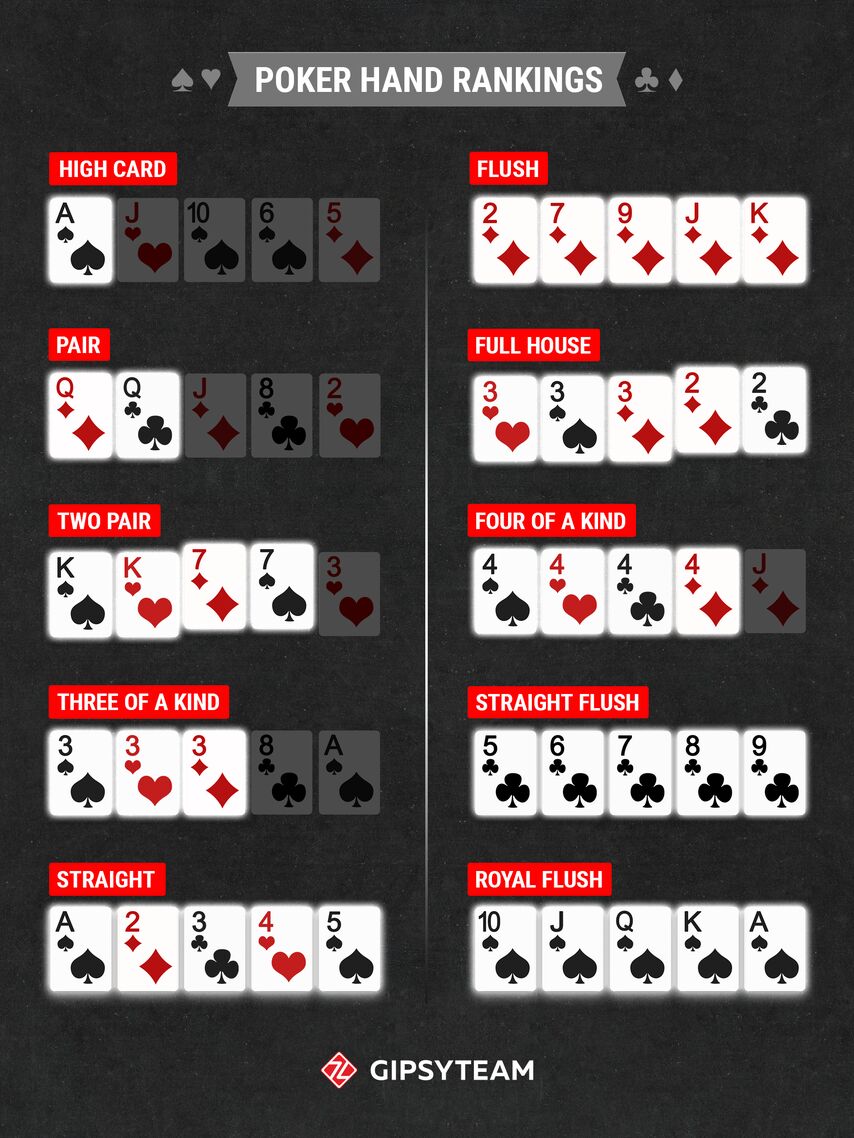
The hand can be stated with the first part as the 3 of a kind then “full of” then the pair part, for example “Queens full of Tens” would refer to QQQTT. A full house is sometimes called a boat.
The probability of making a full house if you are dealt 5 random cards is 0.144% or around 1 in 700.
Types of full house
There are 4 possible ways to make a full house poker hand in Holdem:
1. On the board
When the 5 cards on the board already make a full house, all players who get to showdown will chop unless they can use their hole cards to make a stronger full house or 4-of-a-kind. This can be done by having a higher pocket pair than the board pair, or a card with the same rank as the pair when this improves the hand.
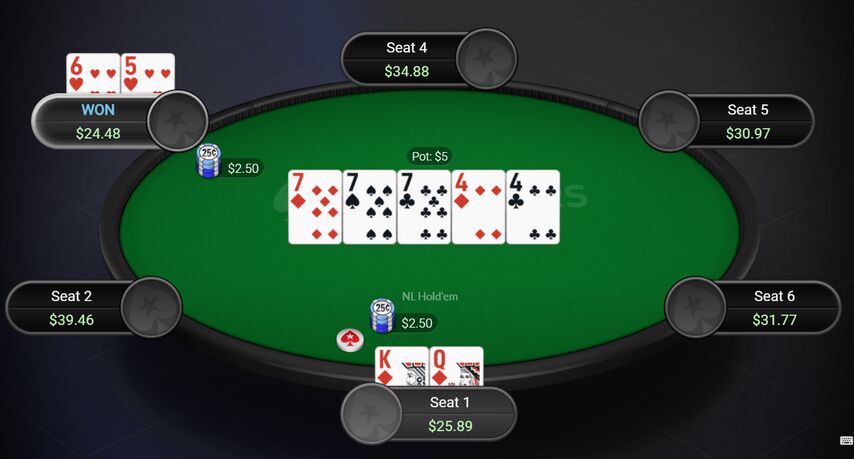
2. Trips Boards
When there is 3 of a kind in the community cards, any pair will make a full house. This means weaker full houses are not that strong in these situations and are more likely to be beat than full houses on only paired boards.
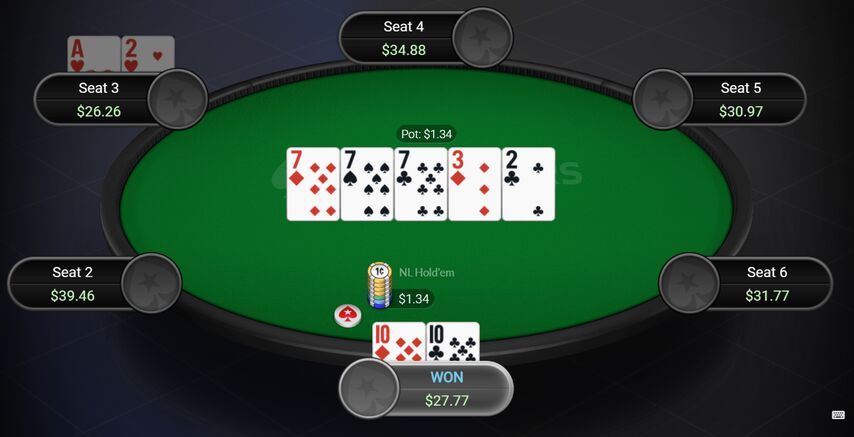
3. Two pairs on the board
When there are 2 pairs, you only need the same rank as one of them to make a full house, or can make one by a pocket pair making a set with the 5th card. Making trips with the higher pair gives you a stronger hand than only the lower one.
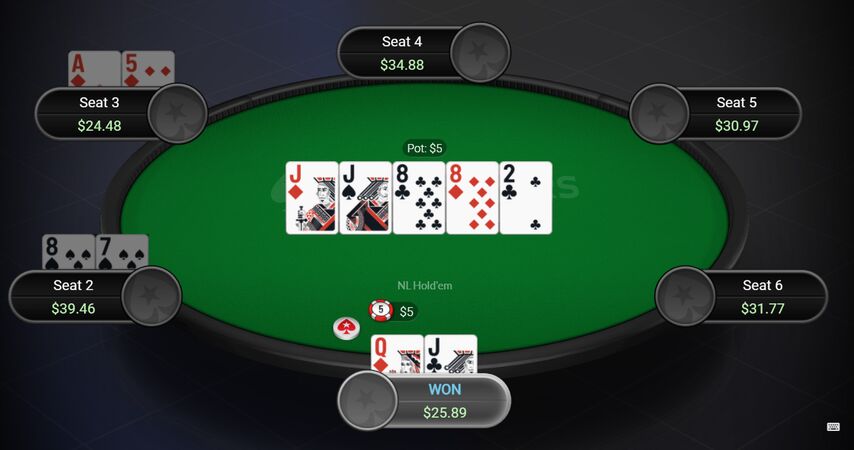
4. One Pair on the Board
In this situation, it’s the least common to make a full house, meaning if you have one it is usually a strong hand. You need either a pocket pair with the same rank as a card on the board or a hand which completes both trips and makes a pair.
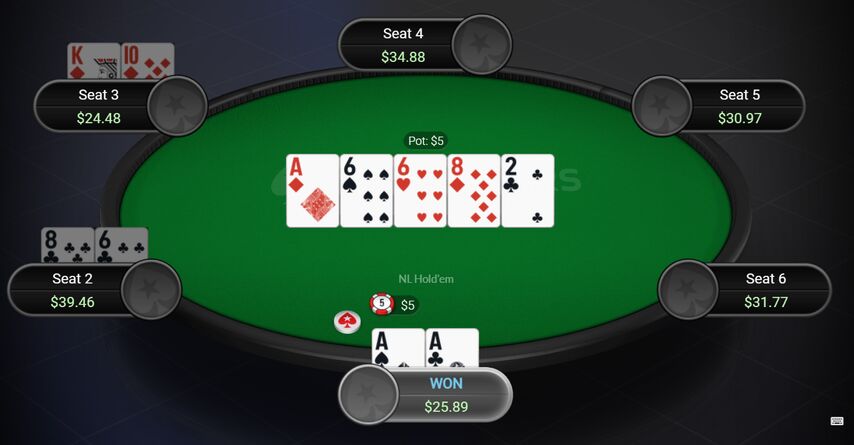
When the board is unpaired, it’s not possible to make a full house and so if you have a flush it can only lose to better flushes and straight flushes. Although before the river a pairing card could still be dealt and so any sets and 2 pairs are drawing to a full house.
Probabilities
The full house poker probabilities depend on your type of hand. If you have a pocket pair, the probability of making a full house by the river, assuming you never fold before then, is 8.3%. With any unpaired hand it is only 2.2%.
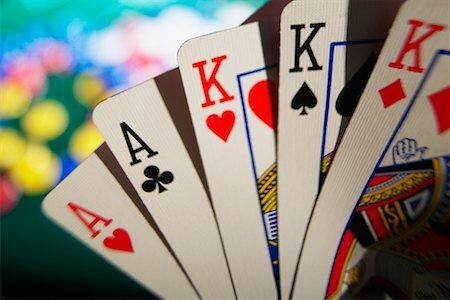
The odds of flopping a full house are 0.98% with a pocket pair and 0.092% with unpaired hands. And for making one by the turn is 3.67% with pairs and 0.63% when unpaired.
However on the flop you gain more information about your hands potential, so the average odds of completing a full house based on your flopped hand is:
| Flopped hand | By the turn | By the river |
|---|---|---|
| Set | 12.8% | 28.6% |
| Two pair | 8.5% | 16.2% |
| Single pair on paired flop | 8.5% | 16.2% |
Omaha
In Omaha you need to use exactly 2 of your hole cards and 3 of the community cards, so you may be able to make a full house using only 1 or more than 2 of your cards but it won’t count. Although your other cards can give useful blocker information, like if you block a higher pair it’s less likely an opponent has stronger full houses that dominate you.
Because everyone has more cards in Omaha the probabilities of making stronger hands are higher compared to the above for Holdem and so the relative value of the same hand is less.
Short Deck
In Short Deck (or sometimes called 6+ poker), flushes and full houses are reversed in the hand rankings, which means a full house loses to a flush, but still beats straights and three-of-a-kind. Because there are fewer cards in play, there’s a greater chance of making full houses.
We have articles for all other poker hands which you may want to look through.














